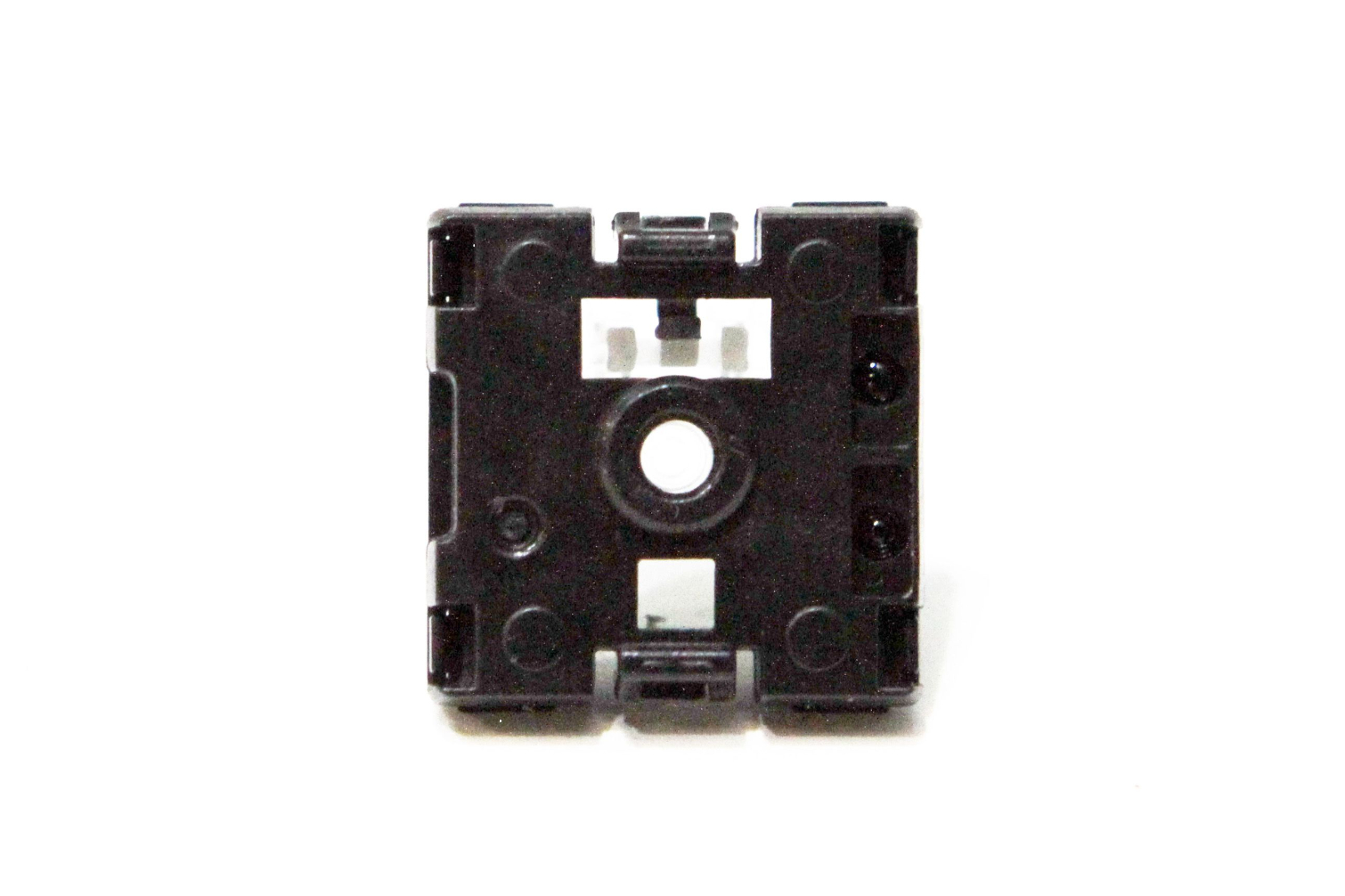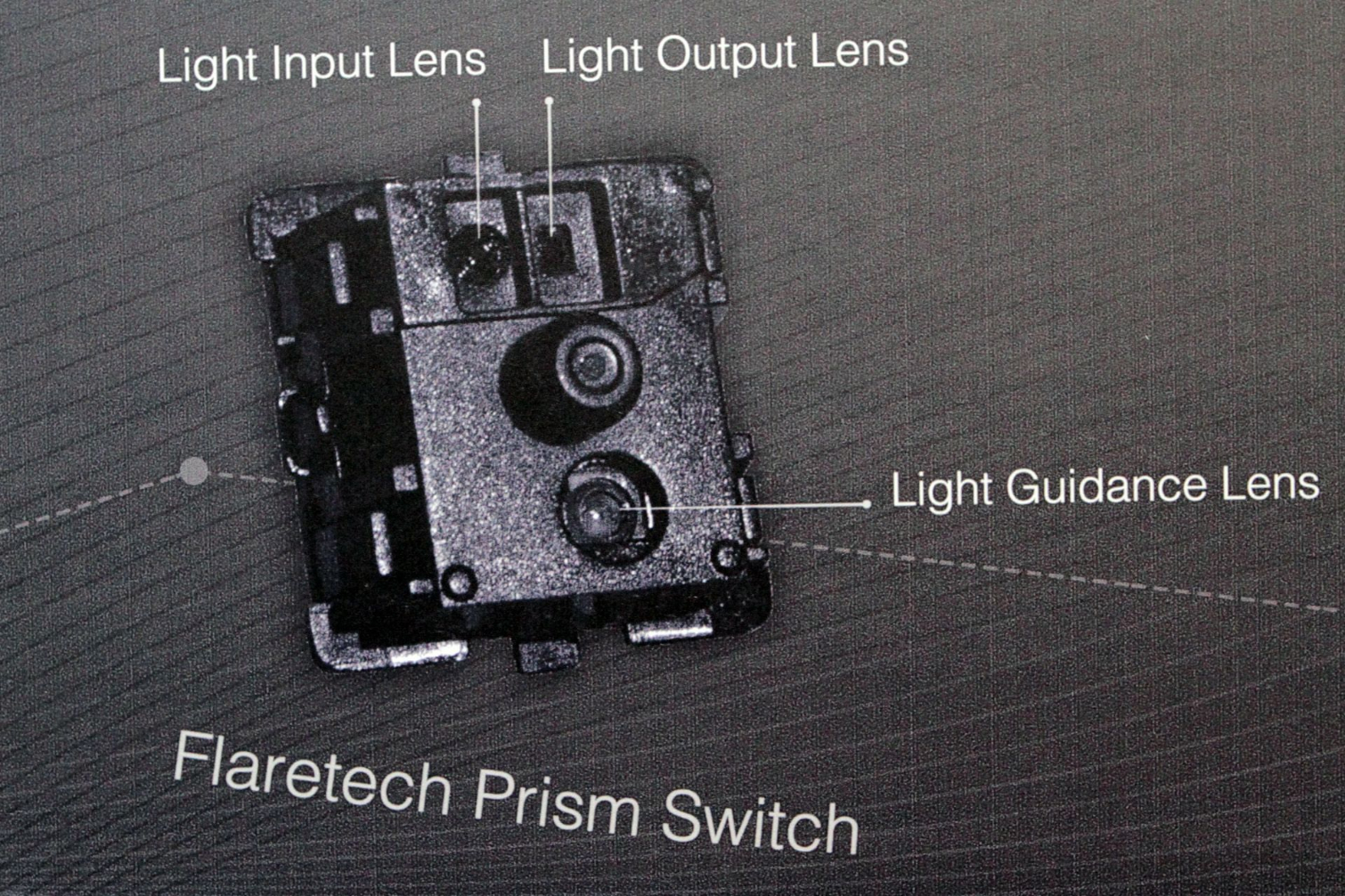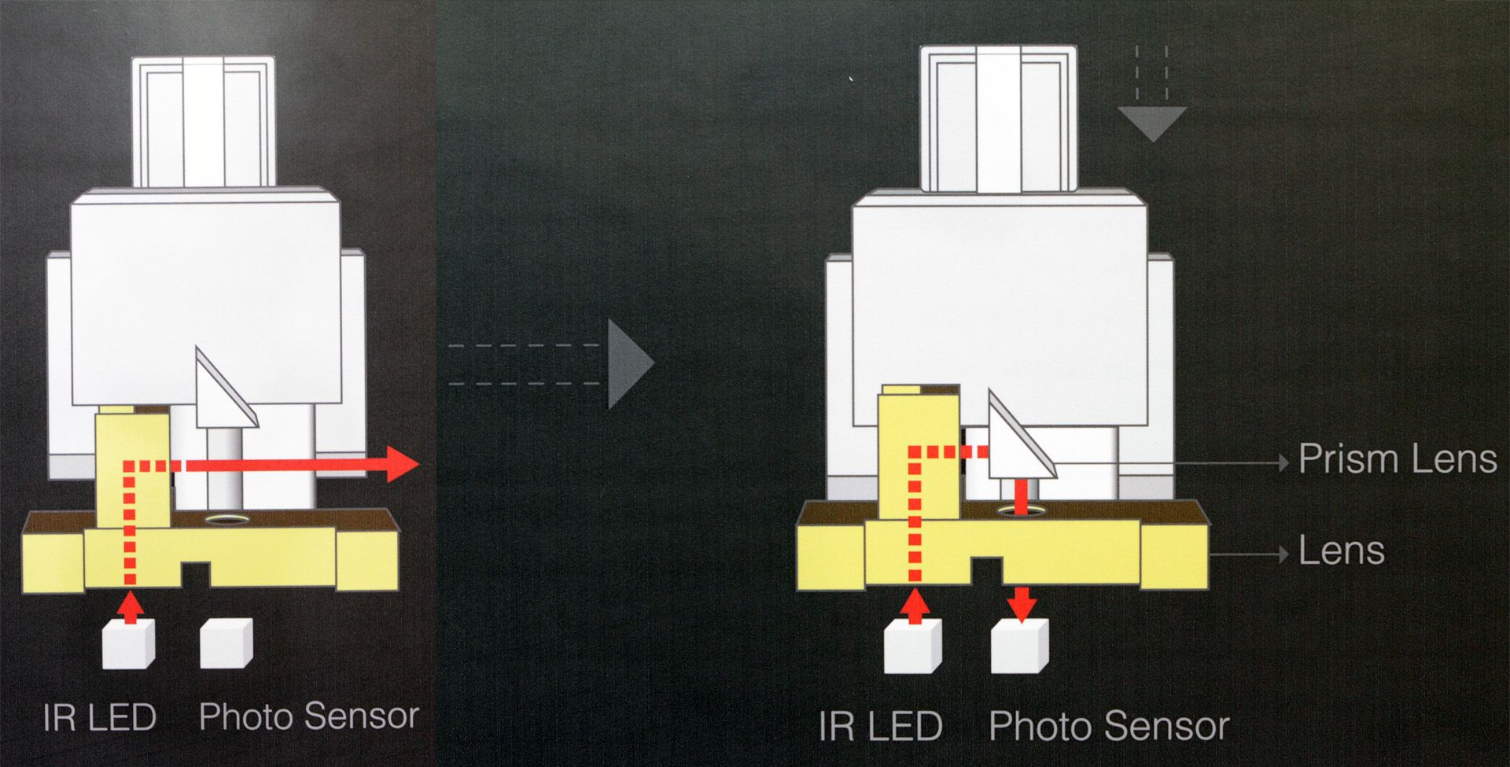Low-Profile Mechanical Laptop Switches That Can (Probably) Do Analog
Three of the most important/most enjoyable/most interesting trends (you can decide which superlative you might apply) in mechanical keyboards right now surrounds analog input, compact designs (we see your TKL and raise you a 60% model), and ever-slimmer switches and chassis. All three are present in, and thanks to, Adomax’s latest Flaretech switch.
Like the super-slim Kailh and TTC switches we saw at Computex, the Flaretech Prism Slim Edition mechanical switches are designed for laptops and low-profile keyboards. They’re also optical switches (the Kailh or TTC switches are not, as far as we can tell), which means that they’re hot-swappable. Thus, if they populated a slim keyboard or a laptop keyboard, you can pop them out and drop in a different switch type (from the same brand, one presumes). For example, if you don’t want a clicky switch, you can swap it for a linear switch.
Again: This could be on your laptop.
Analog?
The other major feature that the Flaretech Prism Slim Edition switches could offer is analog input. We’ve waxed long about the virtues of analog input on mechanical keyboards, and it’s exciting to see mechanical switches come to gaming laptops (in an elegant way, finally), so the prospect of having slim mechanical switches on a gaming laptop that can offer analog input is, frankly, rather amazing.
We say “could,” though, because it’s not a certainty. Yet. We spoke with Calder Limmen of Wooting about these switches. (The Wooting crew was showing off their wares in the Adomax booth at Computex. Wooting, many readers may recall, uses the full-size Flaretech Prism switches in the Wooting One.) Limmen noted that although it should be feasible to offer analog input via the Slim Edition switches, they do have a slightly different way of tunneling the optical signal than their desktop counterparts. He hasn’t yet had the opportunity to fully test analog input with the new switches, so he didn’t want to confirm of disconfirm anything for certain.

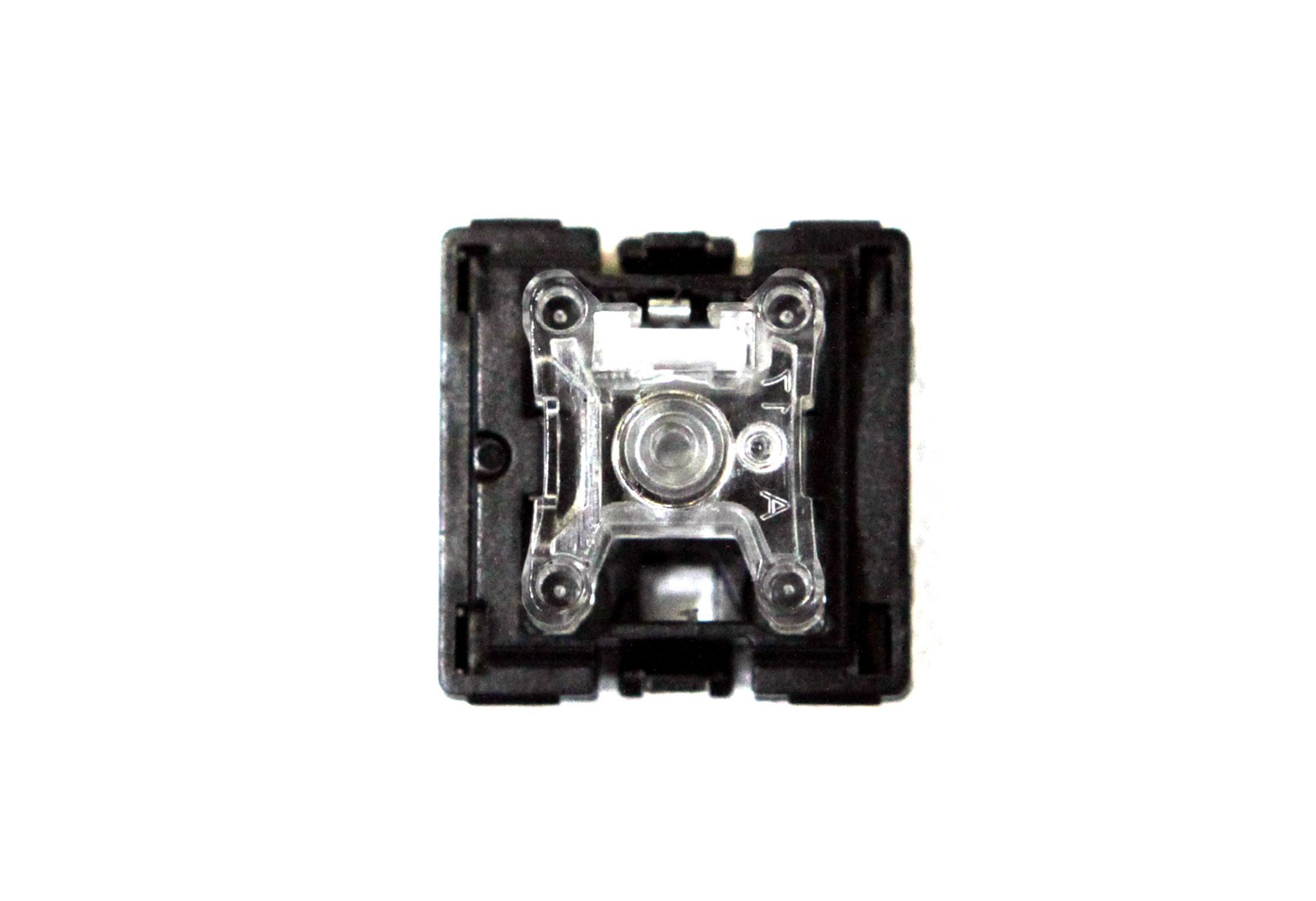

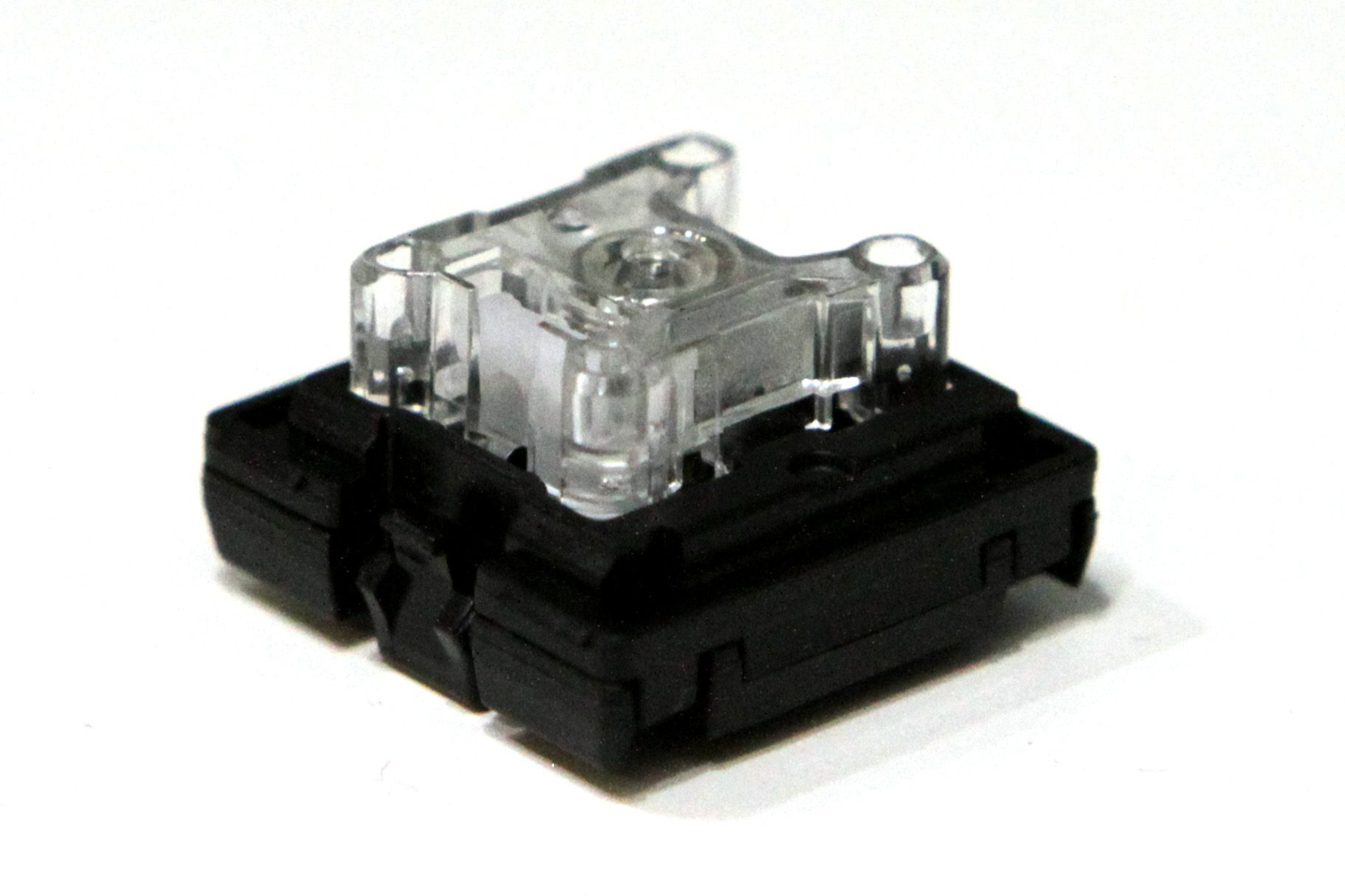
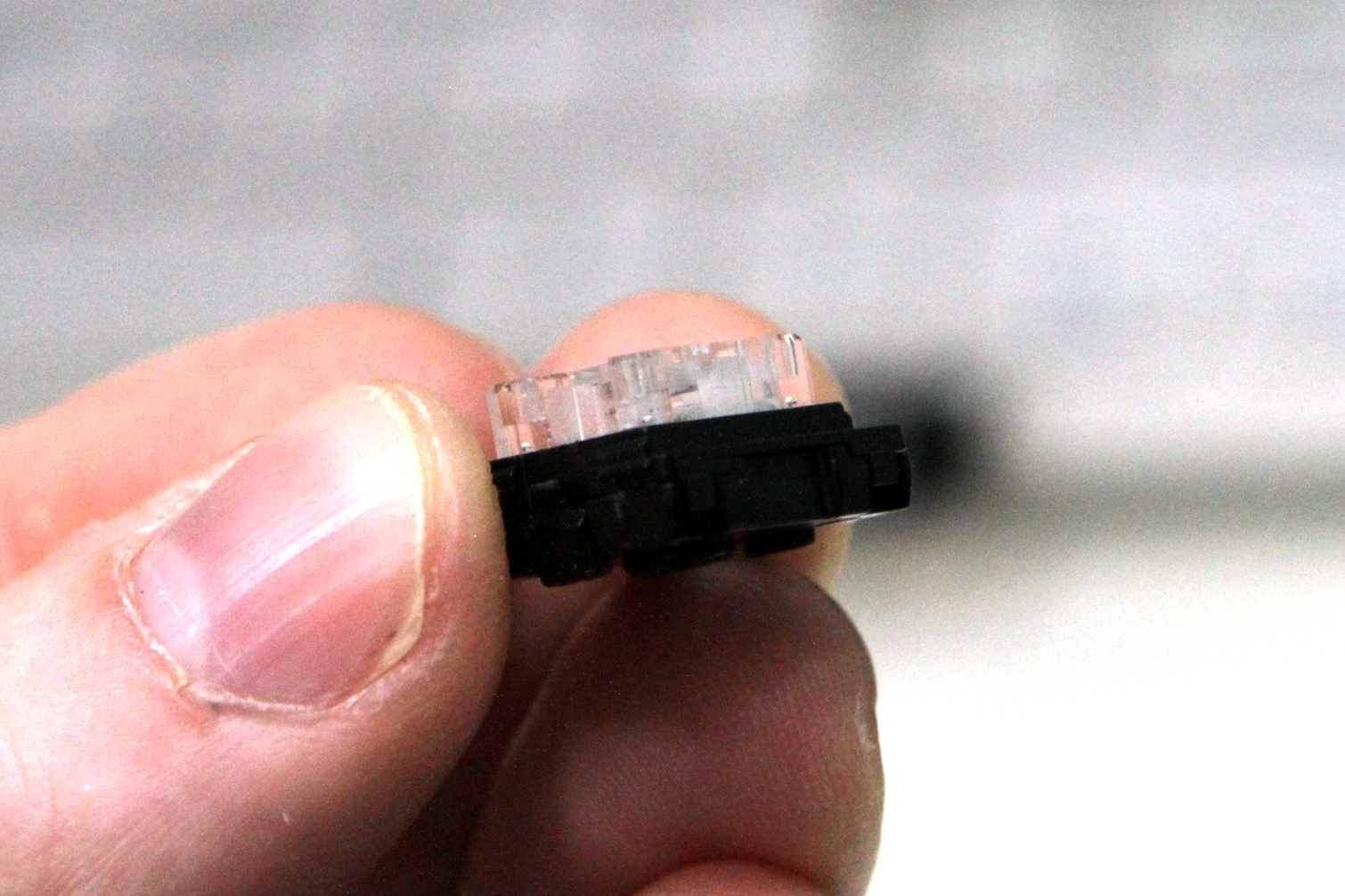
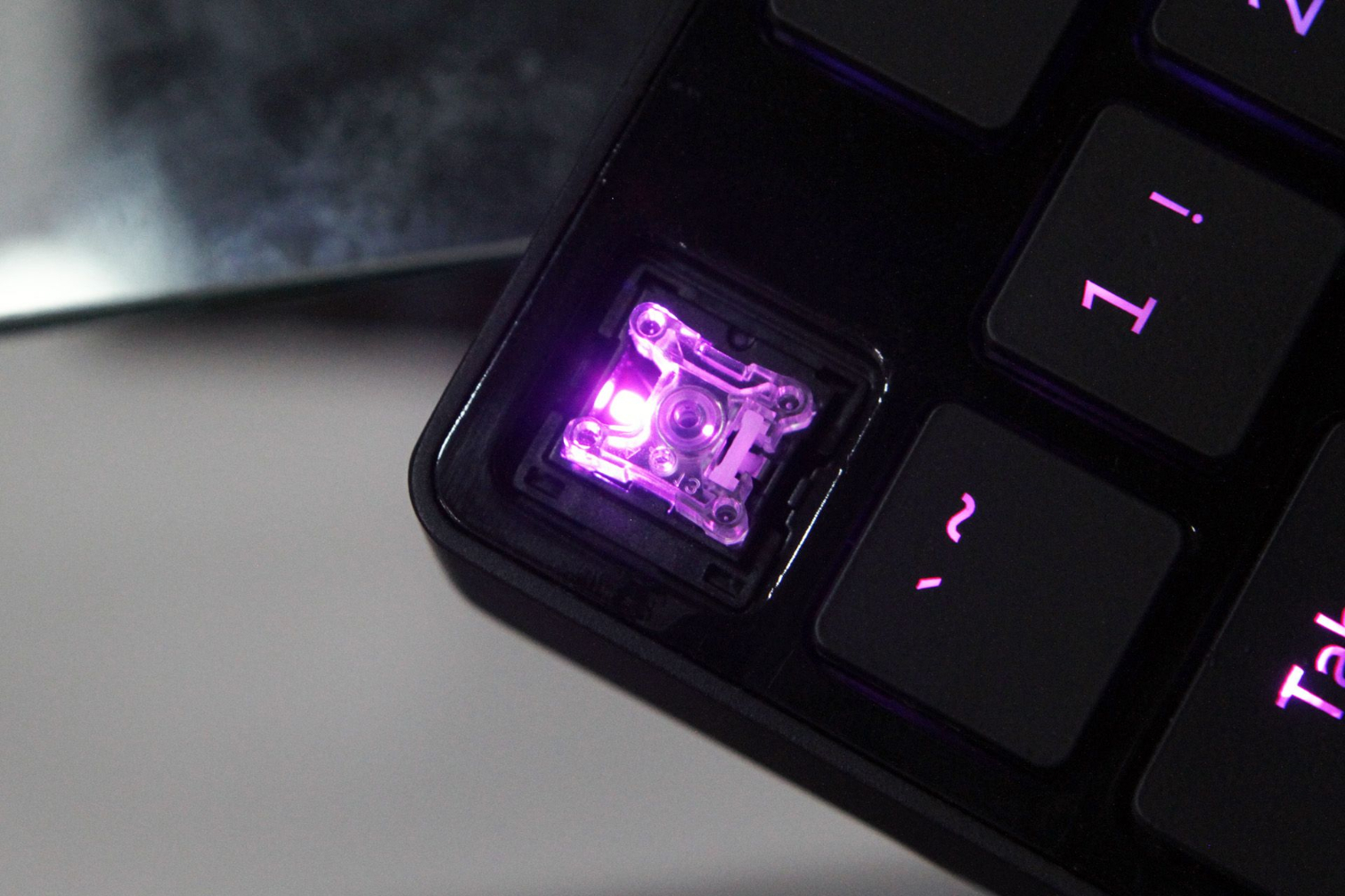
Looking at a couple of side-by-side images (below), we don’t see much of a fundamental difference, although we’re looking at the underside of the switch, not the interior. However, the underside shot is informative to an extent, because it appears to have the same bits as its desktop variant. Below is a shot of the Flaretech Prism Slim Edition with the contrast dialed down so you can better see its parts:
Now, here’s an underside shot of the original (desktop) Flaretech Prism:
Get Tom's Hardware's best news and in-depth reviews, straight to your inbox.
The way the optical sensing is done on the desktop Flaretech Prism switch is that a light beam, pointing up from the PCB, gets shot across the opening of the switch shaft. When you press the key, the switch stem descends, and when the prism interrupts the beam, it gets bent 90 degrees, down to the photo sensor (which is also mounted on the PCB).
On both switches, you’ll note that there are two circular lenses. One pipes the light beam up into the switch housing, and the other is the lens through which the light is redirected back to the PCB. You can see that the lenses are laid out more or less the same way on the two switches.
Thus, we don’t see a reason why that same mechanism for enacting analog input couldn’t be implemented on the new slim switch, although we don’t know what different optical tunneling there is inside.
The new switch actually has 3mm of travel, which could also mean that, depending on how the switch is internally constructed, the Slim Edition could offer analog input that would occur across the same distance as the desktop switch. The Flaretech Prism gets you analog input starting at about 1.8mm into the travel, which means that you have 2.2mm worth of analog input (1.8 + 2.2 = 4mm, and 4mm is the total travel). It doesn’t engage right away because the prism doesn’t catch the light beam until the stem has been depressed a certain distance. Depending on which parts of the switch Adomax reduced in the Slim Edition, it may engage the analog input earlier and could thus give you that same 2.2mm (or thereabouts) of analog input, even though the total travel is 3mm to the desktop version’s 4mm.
Also note that, physically speaking, the switch is designed to make keycaps quite stable. It has four stabilizing “pillars” or “posts,” one in each corner, plus one in the center. This way, even though the keycaps are incredibly thin chiclet-style caps, they should feel sturdy when you’re typing away.
Slim, And Small
Adomax had two keyboard design mockups in its booth. One was a fully dressed model, with an actual chassis that had the PCB nestled into it and the switches mounted on top of that. The other was a “naked” PCB with switches.
The full mockup was thin, to be sure, but not exceptionally so. If the switches had full-height caps, the whole thing would be nearly as thick as many of the slimmer full-size keyboards we’ve seen.
The PCB-exposed version, though, showed more promise. We weren’t able to measure precisely while on the show floor (we didn’t exactly bring our calipers to Taiwan), but our educated guess is that it’s under 10mm thick. That is ludicrously thin for a mechanical keyboard. Granted, once it’s enclosed in a chassis, the whole package will be thicker, but surely it would be similar to or slimmer than Tesoro’s slim mechanical keyboard, which is between 12-15.6mm thick.
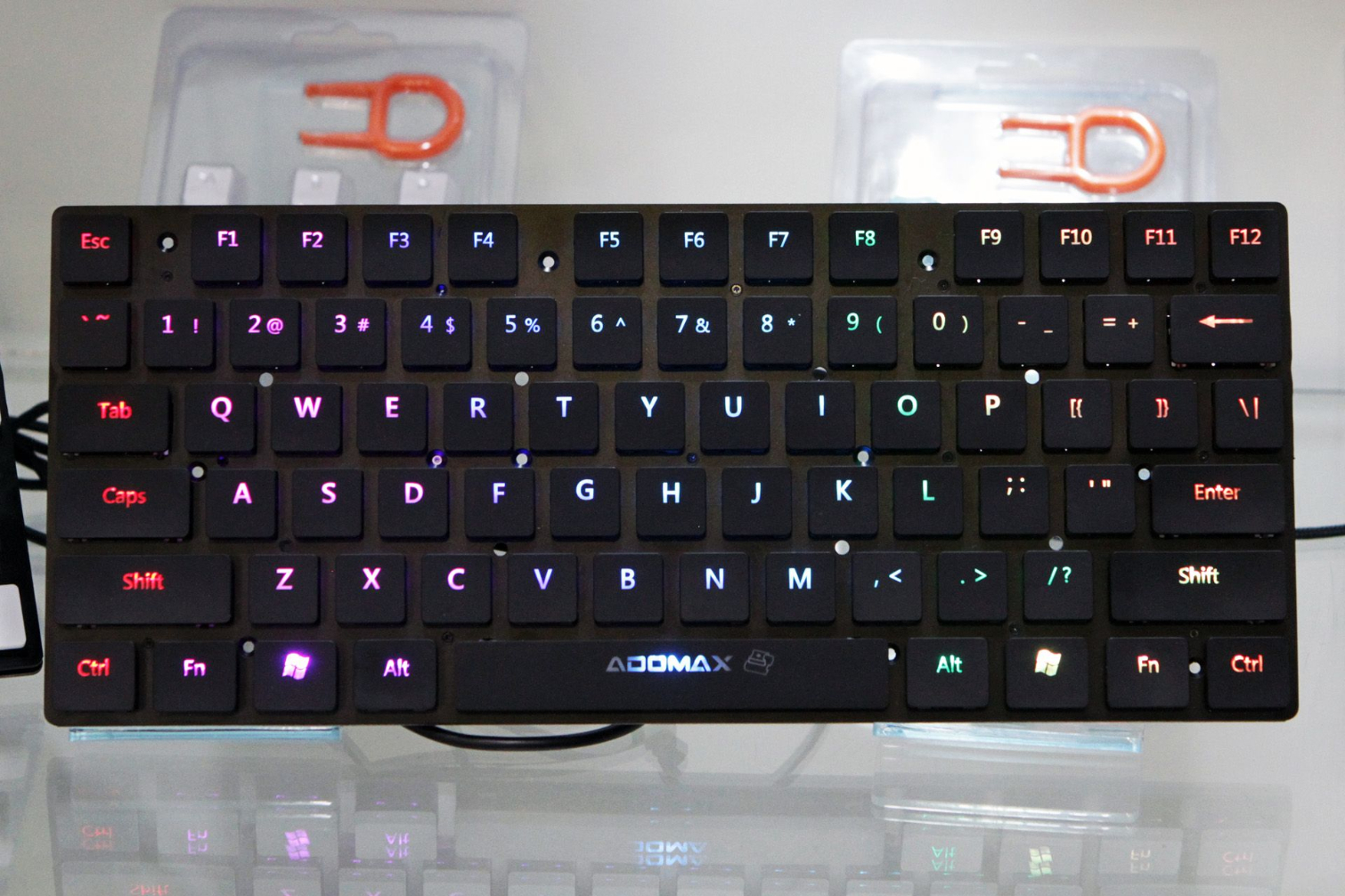
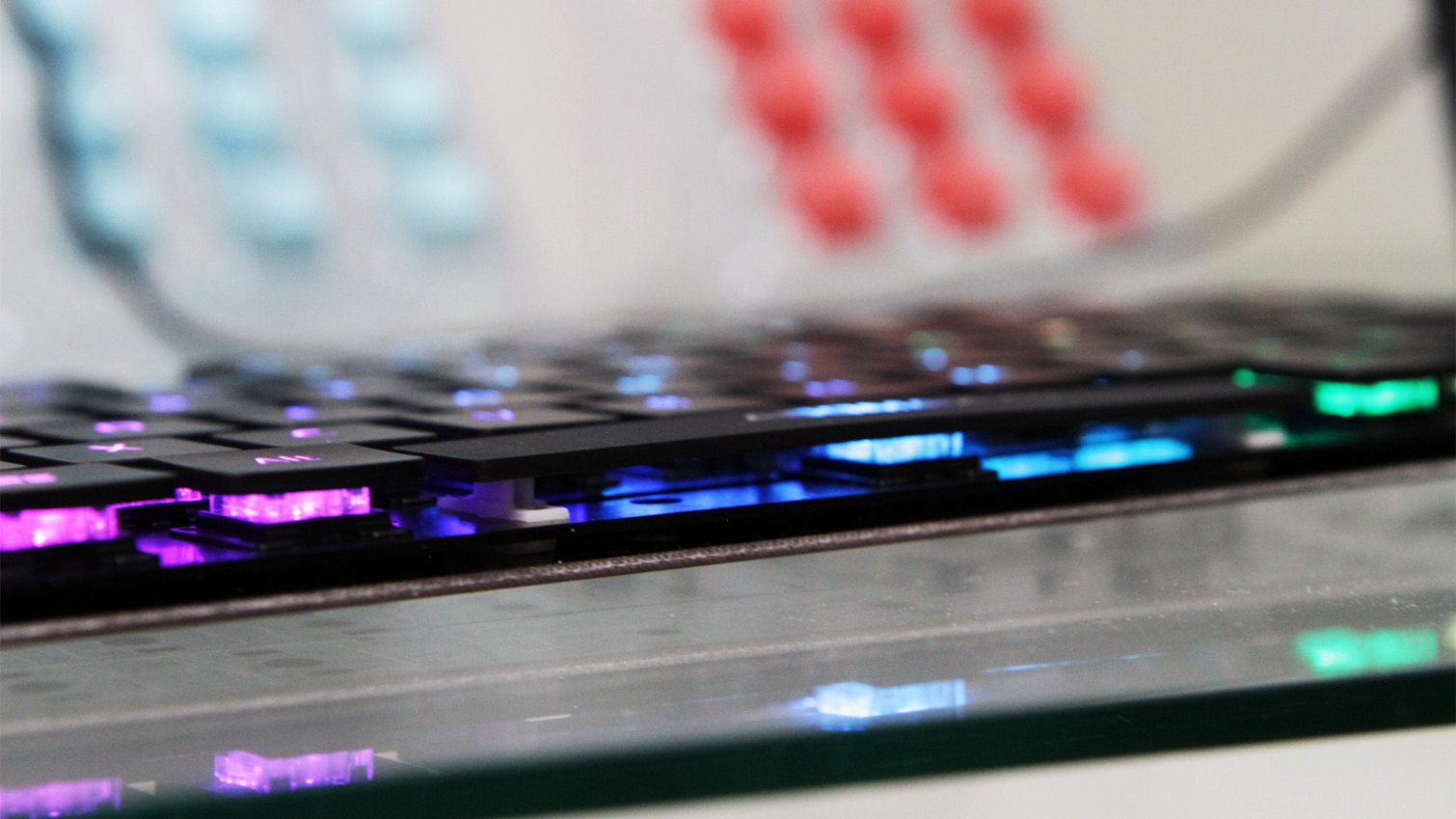
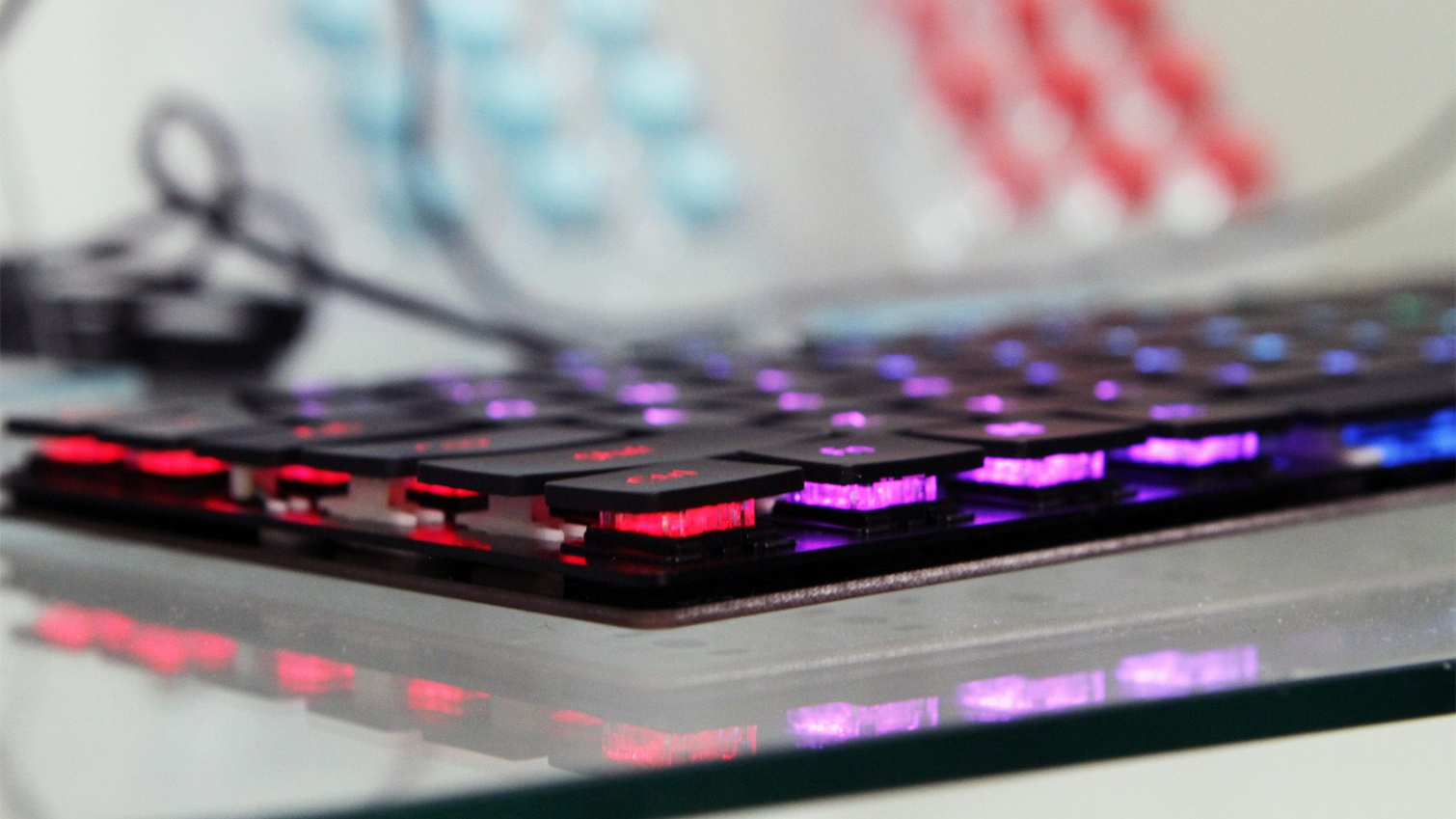
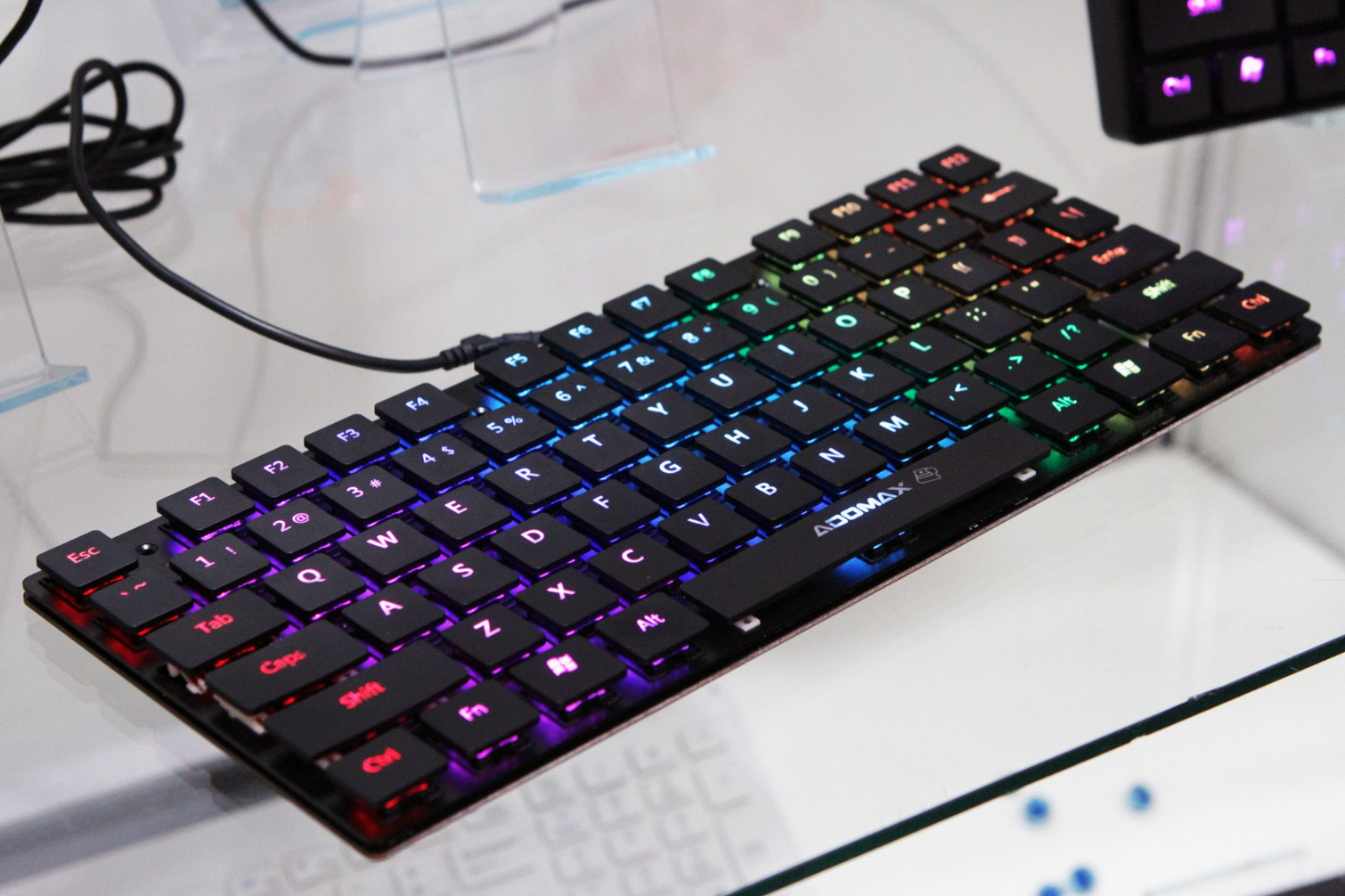
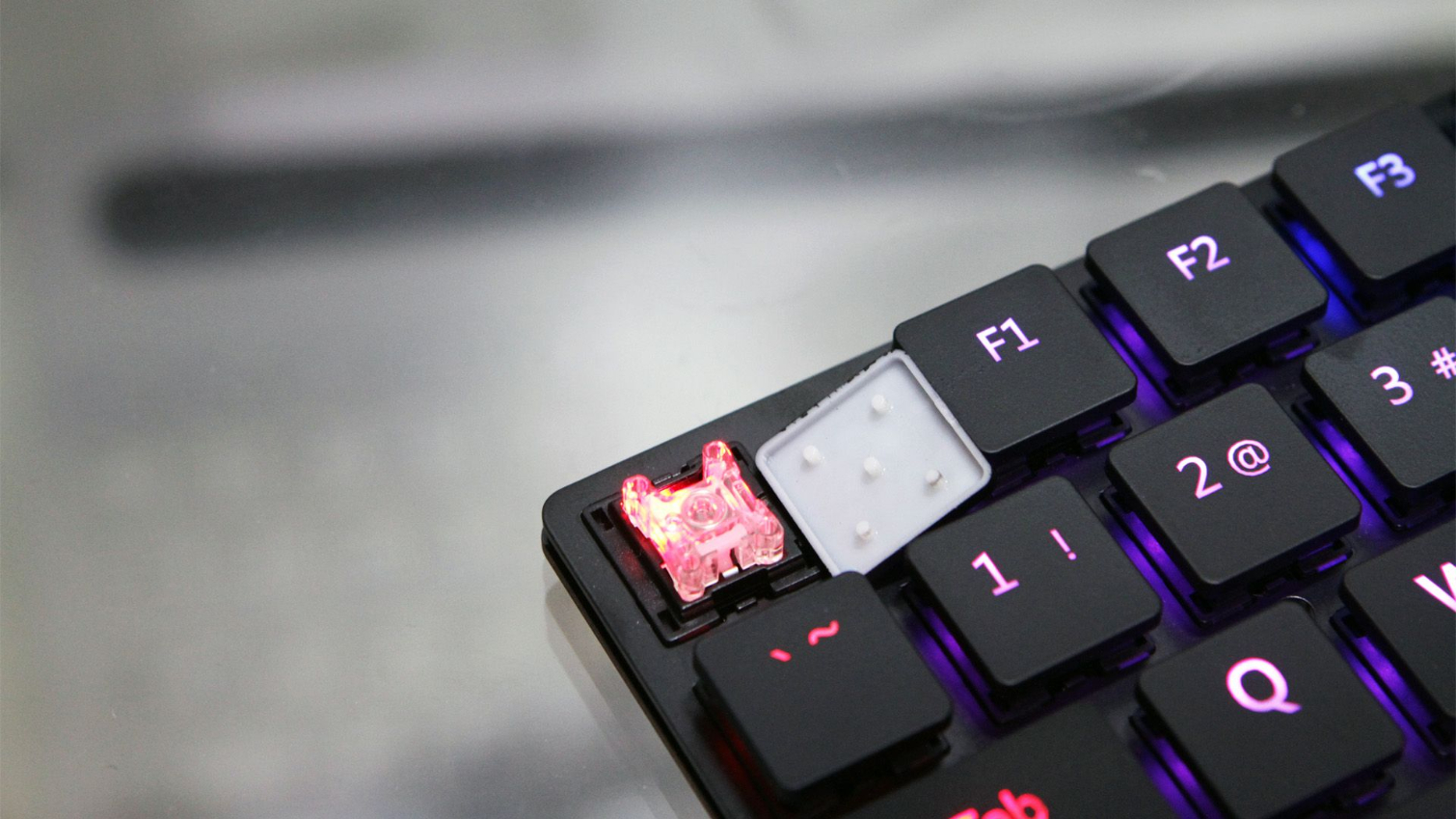

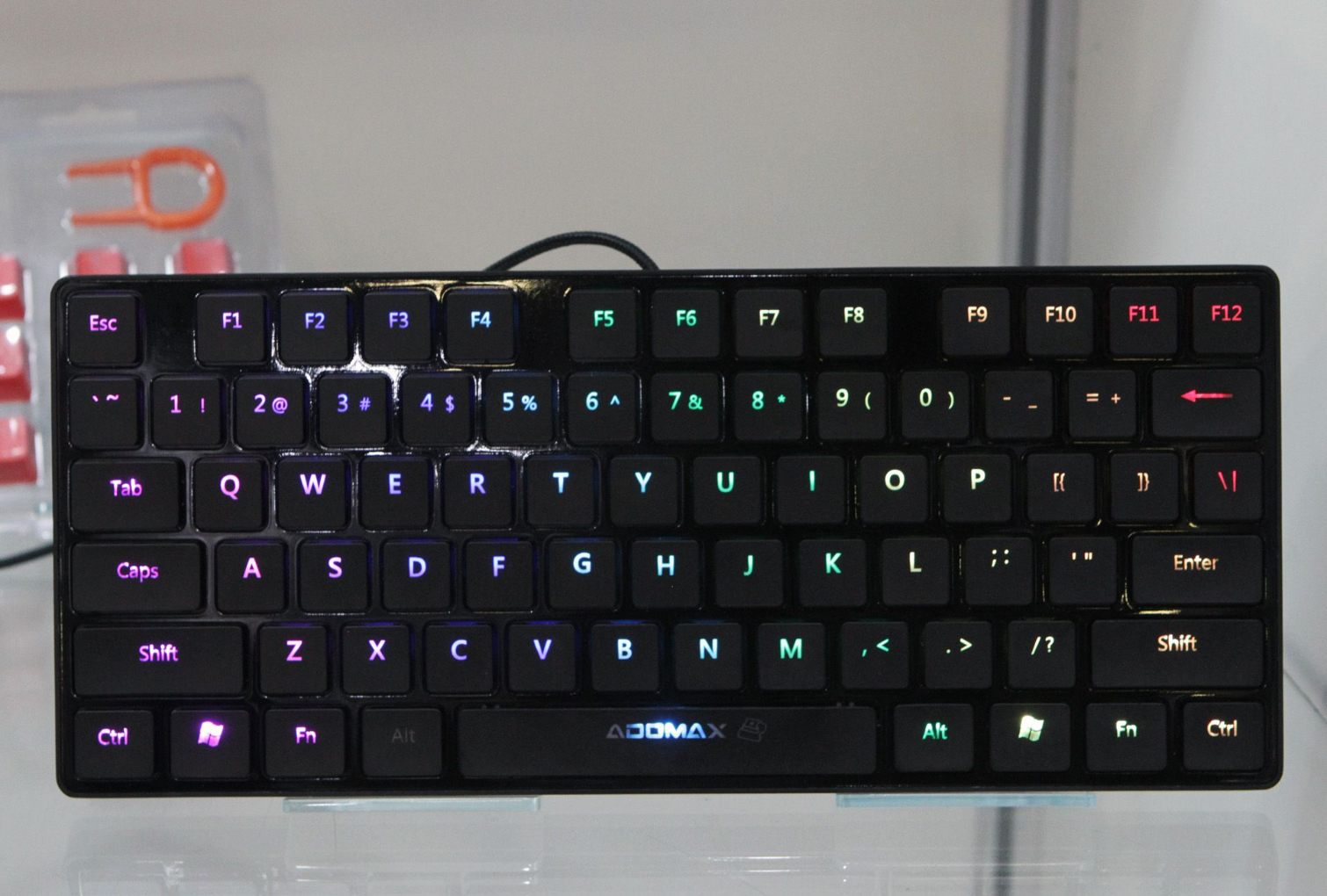
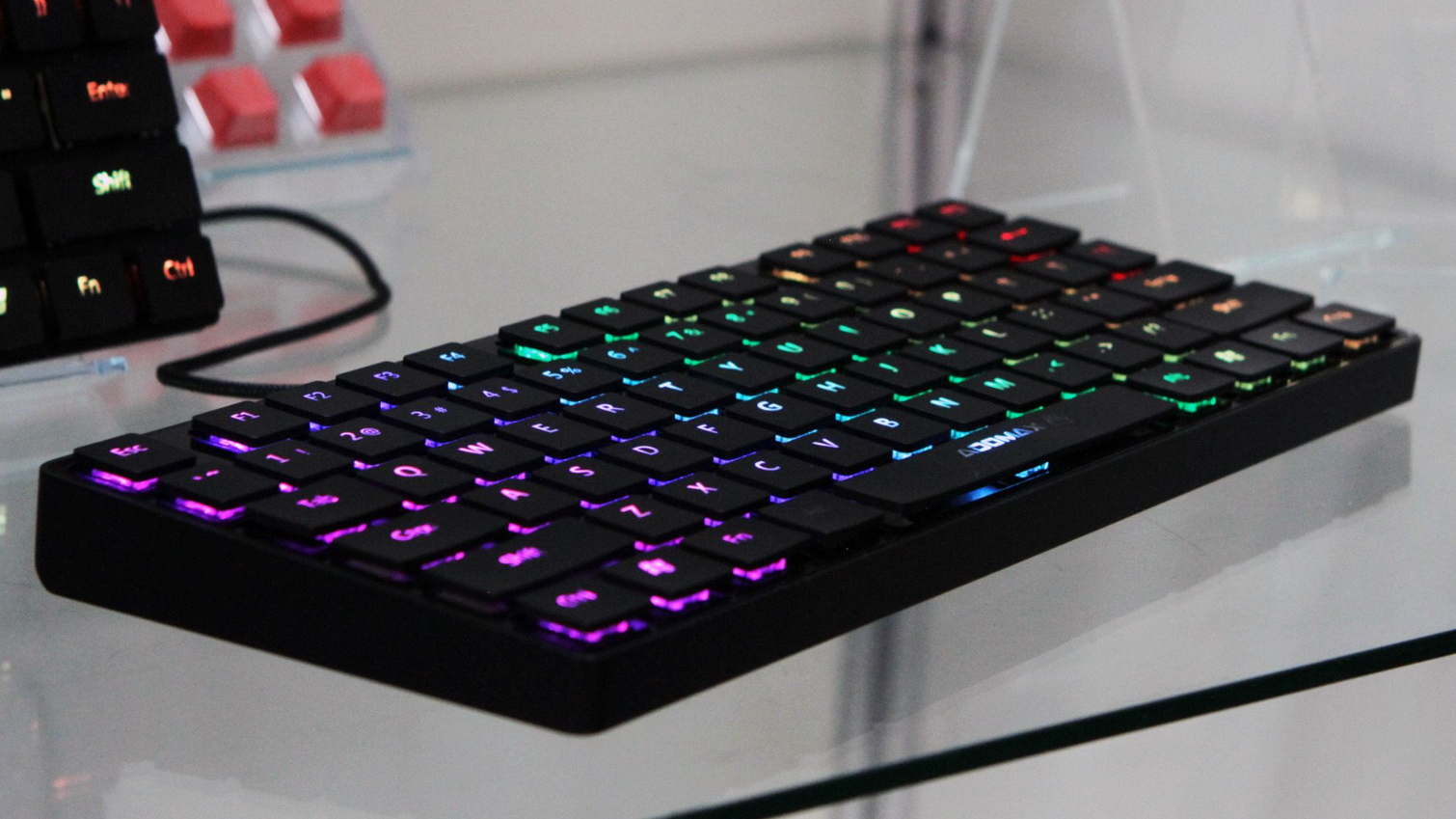
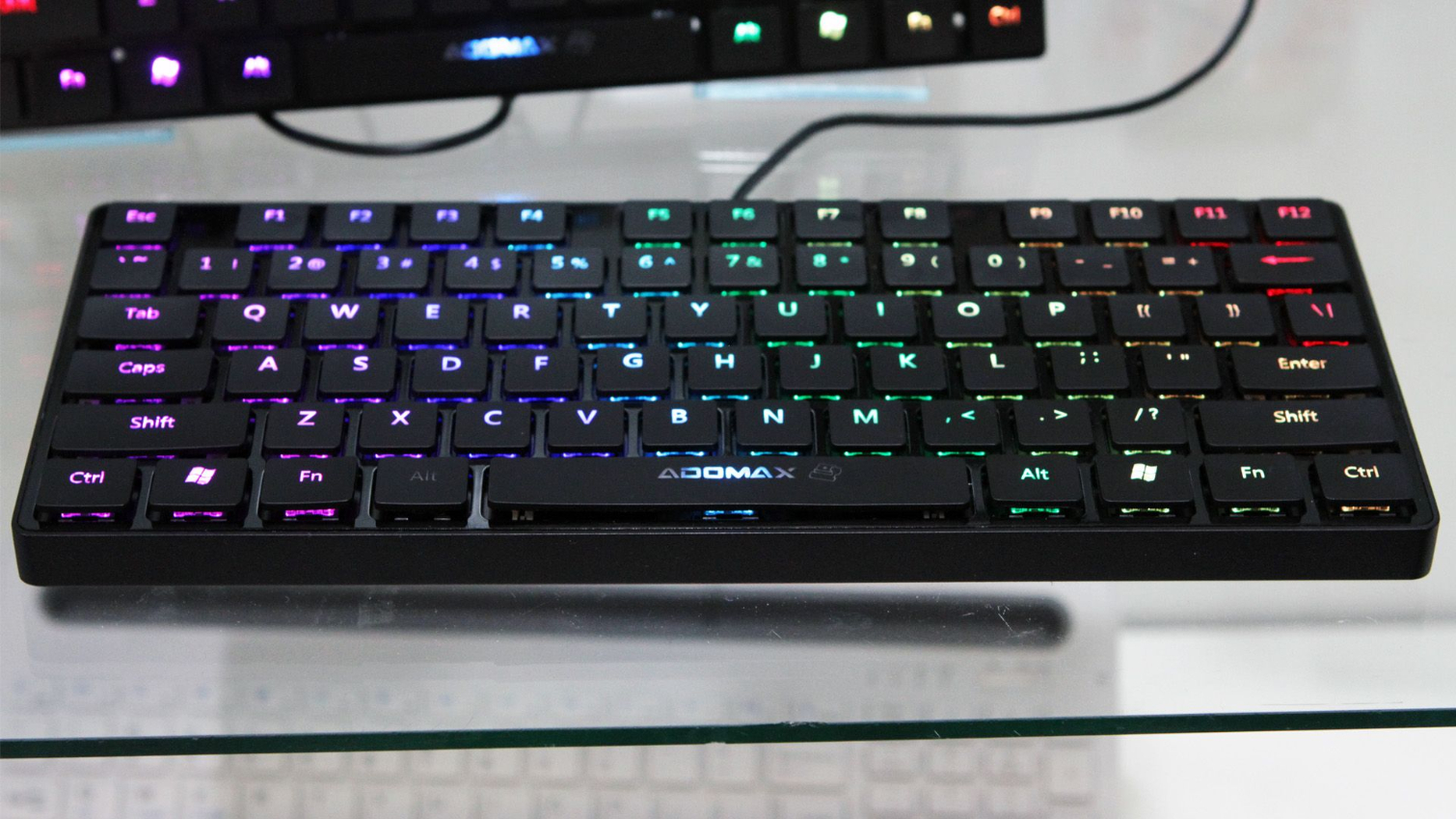
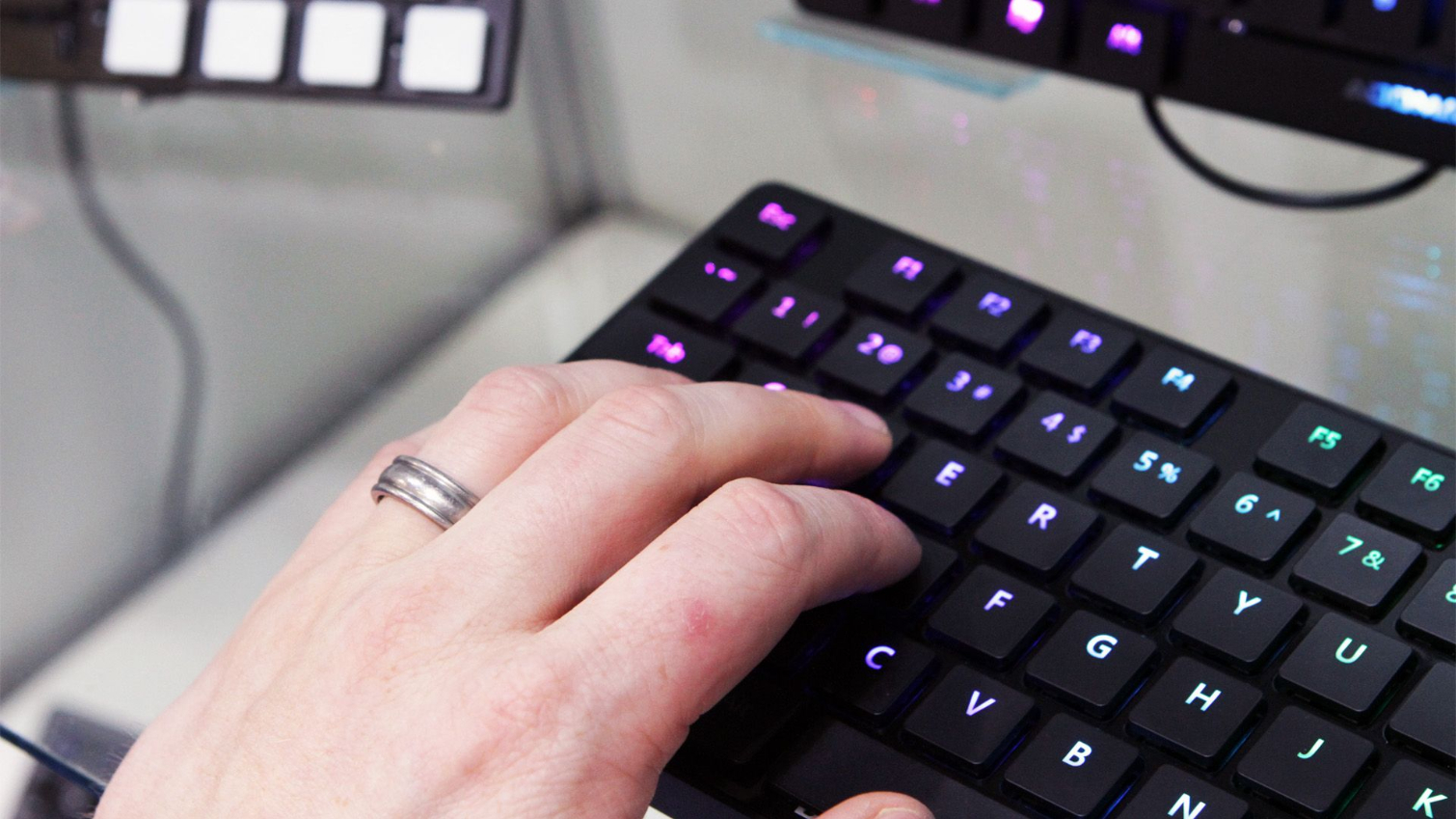
And, of course, these are RGB switches. The LEDs on the PCB support RGB lighting, and the switch housings have transparent tops to let the light emanate from underneath the keycaps as well as through them.
Also note the layout. It’s not just that these are slim designs, like the aforementioned Tesoro keyboard; they’re also quite compact. Both of the models Adomax was showing off actually had 60% layouts--sort of. Because they maintain the F keys, they’re sort of a cross between 60% and 75% layouts. Really, they look like they’ve been designed for laptops.
And that’s kind of the whole point. These slim mechanical switches could be employed in super-slim standalone keyboards or dropped into numerous laptop designs--especially gaming laptops, which tend to have thicker chassis. As we’ve seen, you can already fit low-profile mechanical switches into of slim Nvidia Max-Q gaming laptops. What the Adomax Flaretech Prism Slim Edition switches promise is not just mechanical switches, but optical ones with (probably) analog input.
There’s no word on when we might see these designs come to life as actual products you can buy, but for a certain subset of users who crave thinness but also demand the typing experience that only mechanical switches can provide, they can’t come to market soon enough.
Seth Colaner previously served as News Director at Tom's Hardware. He covered technology news, focusing on keyboards, virtual reality, and wearables.
-
dstarr3 Low-profile and analog? There's not a whole lot of benefit to them being analog if the travel distance is too short. Analog triggers on gamepads can be hard enough to really finesse sometimes, and those have much more travel than even ordinary keyboard keys, let alone low-profile ones.Reply -
scolaner "Depending on which parts of the switch Adomax reduced in the Slim Edition, it may engage the analog input earlier and could thus give you that same 2.2mm (or thereabouts) of analog input, even though the total travel is 3mm to the desktop version’s 4mm."Reply
Tldr, these slim switches could use the same amount of travel for analog input as the full-size desktop version of the switches. -
jtd871 "(we didn’t exactly bring our calipers to Taiwan)"Reply
Really?! Why not?! Other reviewers on the show floor did. They even published photos of the caliper readout. Maybe next year. -
scolaner Reply19820748 said:"(we didn’t exactly bring our calipers to Taiwan)"
Really?! Why not?! Other reviewers on the show floor did. They even published photos of the caliper readout. Maybe next year.
Oh rly? Must have missed that. -
hst101rox Analog input? Like, pressing the 'w' key to varying depths would alter the acceleration of a vehicle in GTA 5 for example?Reply -
scolaner Reply19837640 said:Analog input? Like, pressing the 'w' key to varying depths would alter the acceleration of a vehicle in GTA 5 for example?
That is correct, my friend.
Like this: http://www.tomshardware.com/news/aimpad-r5-analog-switch-keyboard,33289.html
